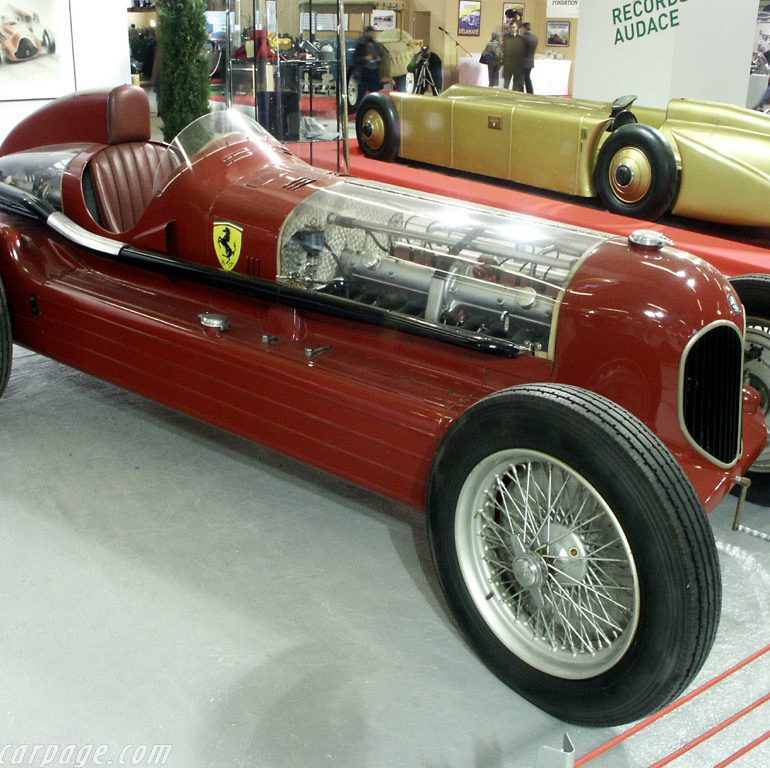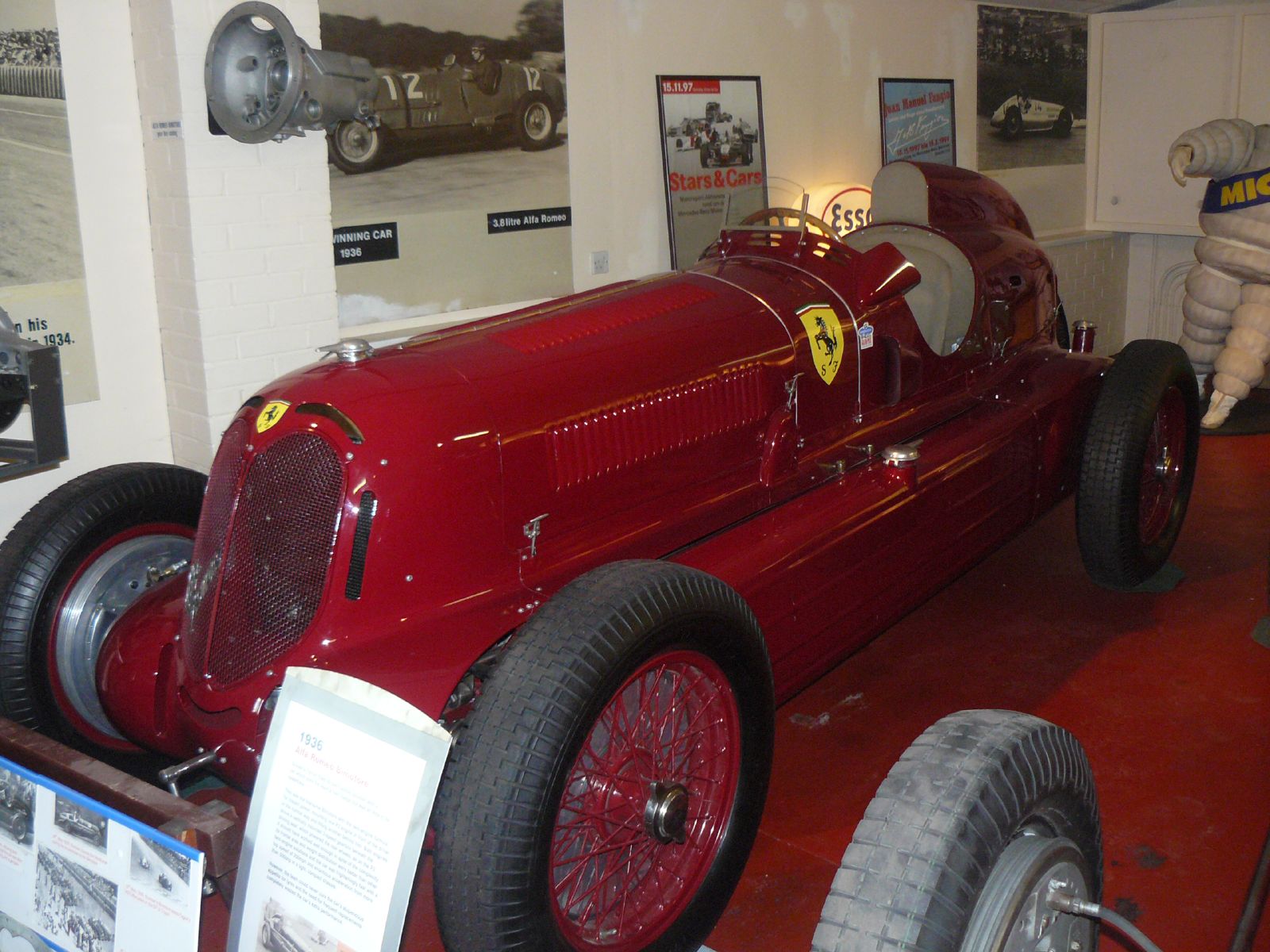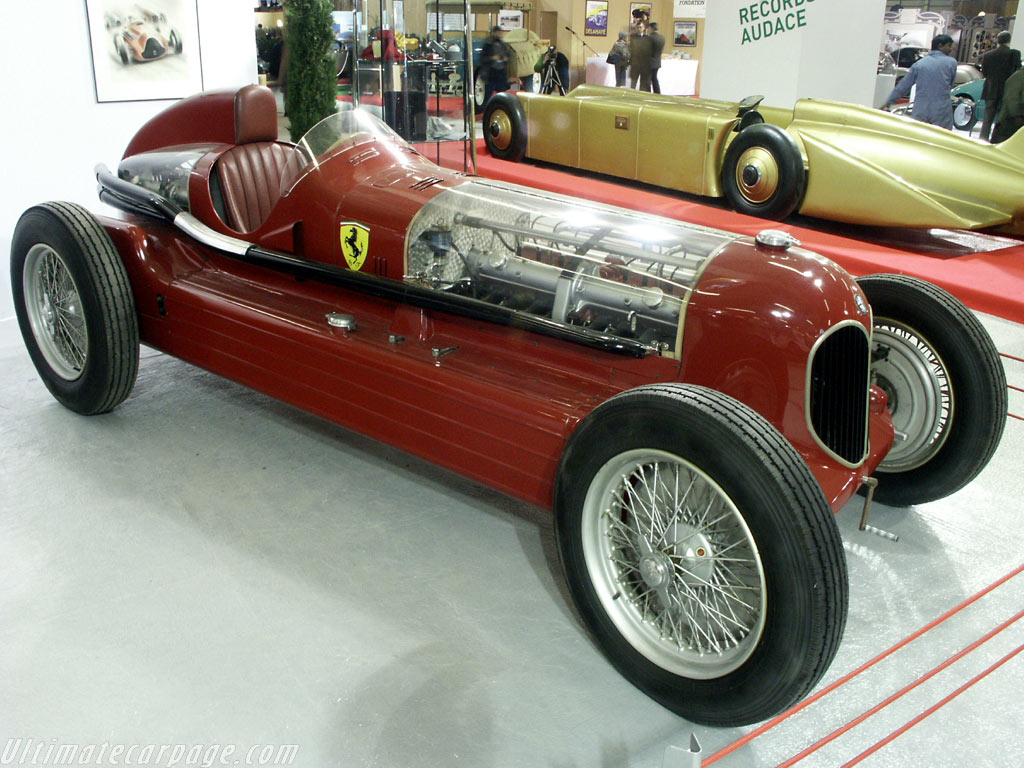Alfa Romeo Bimotore
Initiated by Scuderia Ferrari to take on Auto Union, the Bimotore featured a strait 8 in the nose and the tail. They both drove the rear wheels, but the tires couldn’t put the power down and they tended to destroy themselves every time they went out onto the track.
The year 1934 saw the domination of racing through German technological might in the form of Mercedes and Auto Union Grand Prix cars. What had belonged to the French and Italian teams was now in German hands. Alfa Romeo was desperate to regain their superiority. Scuderia Ferrari was tasked by Alfa Romeo to build their own super car. Long-time Ferrari technical director Luigi Bazzi, did not resort to half measures. Leading this mad adventure, a team of 30 employees, the entire Scuderia, he designed a special chassis based upon a lengthened P3 that carried two 8-cylinder engines that were placed in front and behind the driver with the rear engine facing towards the rear. One version used twin 2.9 litre units while another used twin 3.2 litre units. The differential was located in the middle with the power from both engines supplied to the rear wheels through twin driveshafts in a “Y” format. The fuels tanks would be placed on each side of the car. On top of this, the complete car was finished in less than four months.
The car was intended for the fast tracks on the calendar, such as Tripoli and Avus which were actually Formula Libre events not governed by the rules of the 750kg formula. The original intention was for the car to use Dunlop tires which were considered the best for high-speed use but for some reason Dunlop would not guarantee them for road racing and the switch was made to Engleberts.
Two Bimotores were entered for the Tripoli Grand Prix which was run under formula libre rules. The cars were driven by Tazio Nuvolari and Louis Chiron. At the drop of the flag the Mercedes of Rudolf Caracciola leapt into the lead followed by his “teammate” Luigi Fagioli with Nuvolari hanging on to this leading duo. Nuvolari was able to pass Fagioli only to have to pit on the third lap for new rear tires. The next set of tires were able to last four laps. While the Alfa could maintain the leaders pace on the straights it’s handling in the corners could not. By race end Nuvolari would claim fourth place followed by Chiron in a race won by Caracciola. One of the cars few “victories” came when Tazio Nuvolari on Dunlops set a new world record for the kilometer at 321km/h on the Florence Autostrada topping 208 mph at one point.
The major reason for its relative lack of success could be traced to its prodigious use of fuel and tyres brought on by its excessive weight and power. More often then not the car was either entering or leaving the pits after receiving some sustenance. Thus the noble attempt that became the Alfa Bimotore could have easily been called the first Ferrari but rather than struggle to make it race worthy the project was soon dropped. With one of the cars scrapped the other was sold to British amateur driver Austin Dobson for national events at Donington and Brooklands.
Source: Alfa Romeo Bimotore
Specs & Performance
| type | Professionally Tuned Car |
| production years | 1935 – 1935 |
| built at | Modena, Italy |
| production | 3 |
| price $ | $ Prototype |
| engine | Strait 8 |
| position | FrontRear |
| aspiration | Twin Supercharged |
| fuel feed | Carbs |
| displacement | 3163 cc / 193 in³ |
| compression | 7:1 |
| power | 201.3 kw / 270 bhp @ 5400 rpm |
| torque | 644 nm / 475 ft lbs @ 2900 rpm |
| body / frame | Aluminum |
| driven wheels | RWD |
| front brakes | Drum |
| rear brakes | Drum |
| steering | Worm and Sector |
| curb weight | 1030.58 kg / 2270 lbs |
| transmission | 3 Speed Manual |
| top speed | ~320.19 kph / 199 mph |
| 0 – 60 mph | ~5 seconds |






